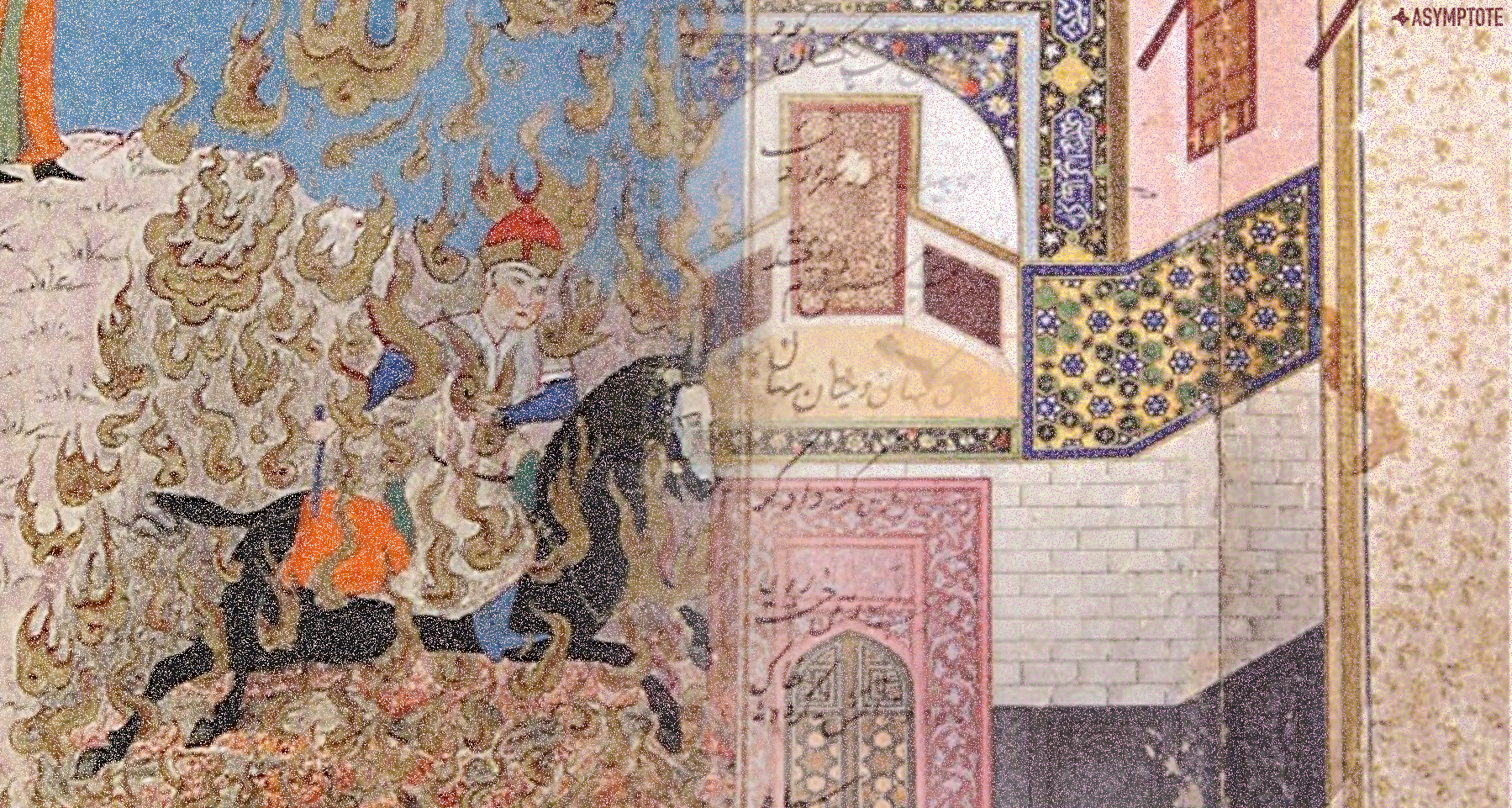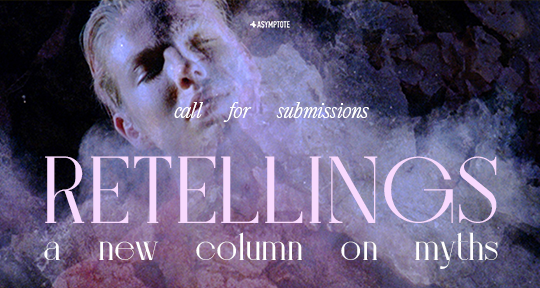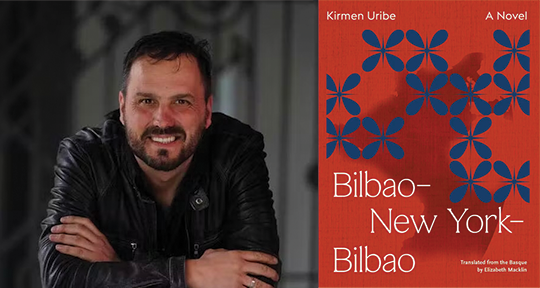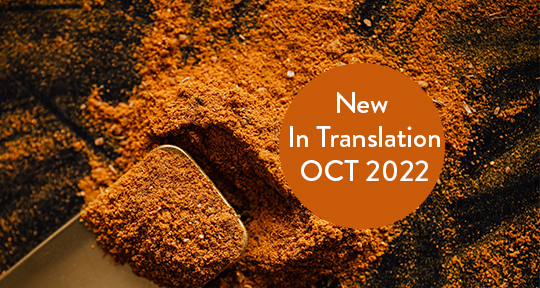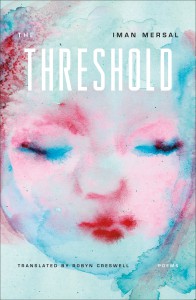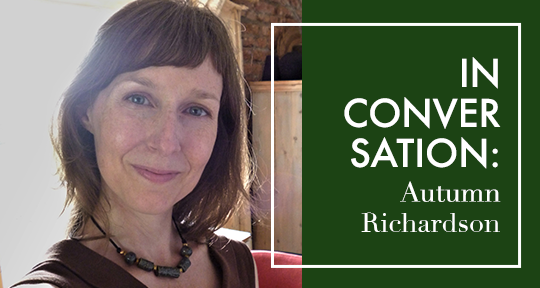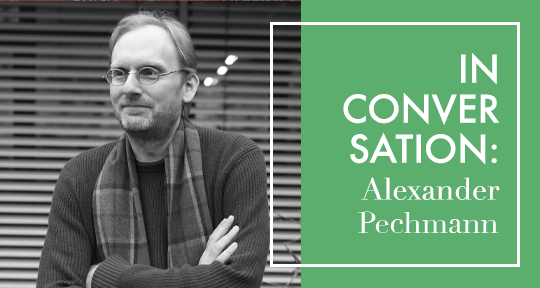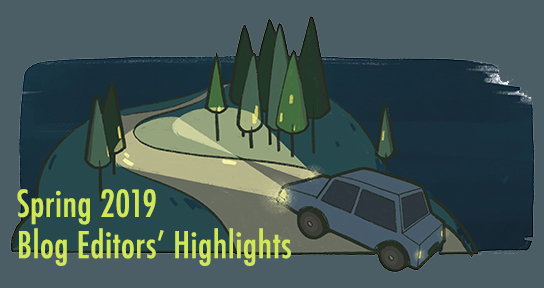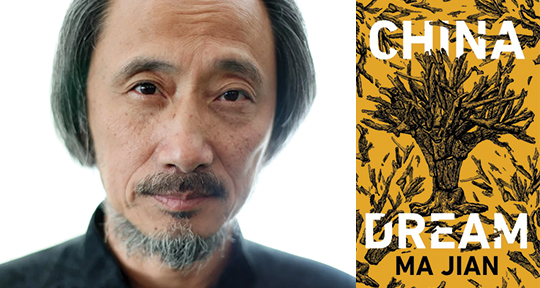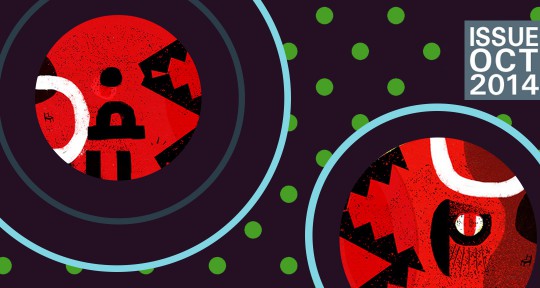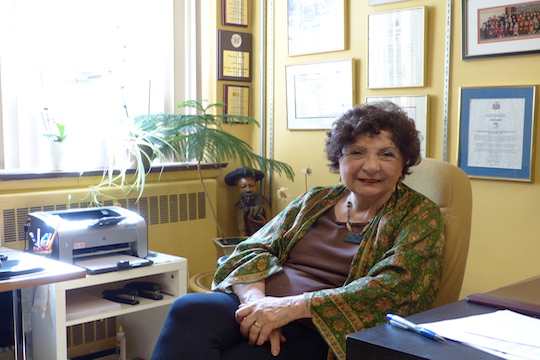In Landmarks (2015), British writer Robert Macfarlane’s meditation on place, he named Autumn Richardson, among other writers, as “particularizers … who seek in some way to ‘draw every needle’ … [with] precision of utterance as both a form of lyricism and a species of attention.” Reliquiae, the journal of landscape, nature, and mythology which Richardson co-founded and co-edits with her partner, composer, writer, and artist Richard Skelton, is guided by this ethos and mode of engagement. In its ten years, Reliquiae has published texts from antiquity: Navajo songs; the Song dynasty poet Wáng Ānshí; magical and medicinal incantations from Catawba, Klamath, Chuckchee, and Winnebago peoples; southern African beliefs in naming stars; fragments from the German Renaissance alchemist-theologian Paracelsus; evocations to Yoruba deities; the Náhuatl poet Nezahualcóyotl; Egyptian spells; and hymns of the now-extinct Eoran language in Australia. The journal has also introduced readers to English translations from, among others, the original Algonquian, Binisayâ, Old English, Ancient Greek, Hindu, Old Icelandic, Iglulingmiut, Old Norse, Scottish Gaelic, West Saxon—along with their source texts.
Speaking to the precision and attention that guides her work, Richardson tells academic journal Studies in Travel Writing, “My own writing is more concerned with movement through landscapes … the vertical, going down through the layers botanically, biologically, geologically, etymologically, historically.” In this interview, I asked about the wondrous archive of Reliquiae, and how she explores landscape, ethnology, (vertical) travel, ecology, botany, and occultism in her own art, writings, and translations.
Alton Melvar M Dapanas (AMMD): Personally, I think of Reliquiae—and its disciplinary breadth of landscape, folklore, ecology, esoteric philosophy, animism—as a treasure trove of consequential importance not only to specialists, writers, and translators, but also for a generalist readership. In the submission guidelines, there is emphasis on “beyond plain nature writing.” Can you elaborate on this?
Autumn Richardson (AR): Fundamentally, Reliquiae fills a niche that is shaped by our own unique interests. We couldn’t find a single publication that focused on landscape and the natural world, whilst refracting that focus through the prism of myth, esotericism, magic, occult philosophy, and anthropology. One of the reasons we formed Corbel Stone Press in 2009 was to begin publishing work that connected these disparate but allied disciplines. We began by publishing our own writing, but our goal was always to edit a journal, and 2022 is the tenth anniversary of Reliquiae.
AMMD: Let’s talk about Heart of Winter, your 2016 collection of found-poems assembled from the journals of ethnologist Knud Rasmussen and botanist Dr Thorild Wulff which chronicles the Second Thule Expedition, their 1917 journey through the north-western coastal landscapes of Greenland. When asked about your translation process from the Danish (and Inuit), you responded that, “it was a process of simplifying ever so slightly … [not wanting] to change [Rasmussen’s] words hardly at all … want[ing] to preserve his voice.” As a translator who questions her own discursive presence in the text, does this imply that between the competing ideologies within the translation of myths and folklore, you favour linguistic faithfulness over stylistic realism?
AR: That’s a difficult question to answer. I’m not dogmatic in my choices—it’s more instinctual. I’m acutely attentive to the shape, texture, and colour of each word in both languages when I translate. However, I have noticed that provisional, literal translations are strangely compelling. There’s something about that interstitial state—between one language and another—that is extraordinarily powerful. This can often happen, for example, when the word order of the original is preserved, resulting in an unusual word-grouping in the translation. For me, I find this shadow presence of the original language unspeakably rich and evocative, and I always try to retain something of its colour in my work. My concern is always to mirror, as faithfully as possible, the poet’s choice of words, as well as what I perceive to be the emotions and motivations behind the poem or song itself. For example, within the Inuit songs in Heart of Winter, a primary and repetitive motif is the uncertainty of survival, and the consequent gratitude or joy when a new season is witnessed, when nourishment is attained. It was immensely important to me to try to carry these sentiments forward, because, to my mind, these expressions and emotions were the heart and the purpose of the songs themselves.
READ MORE…

